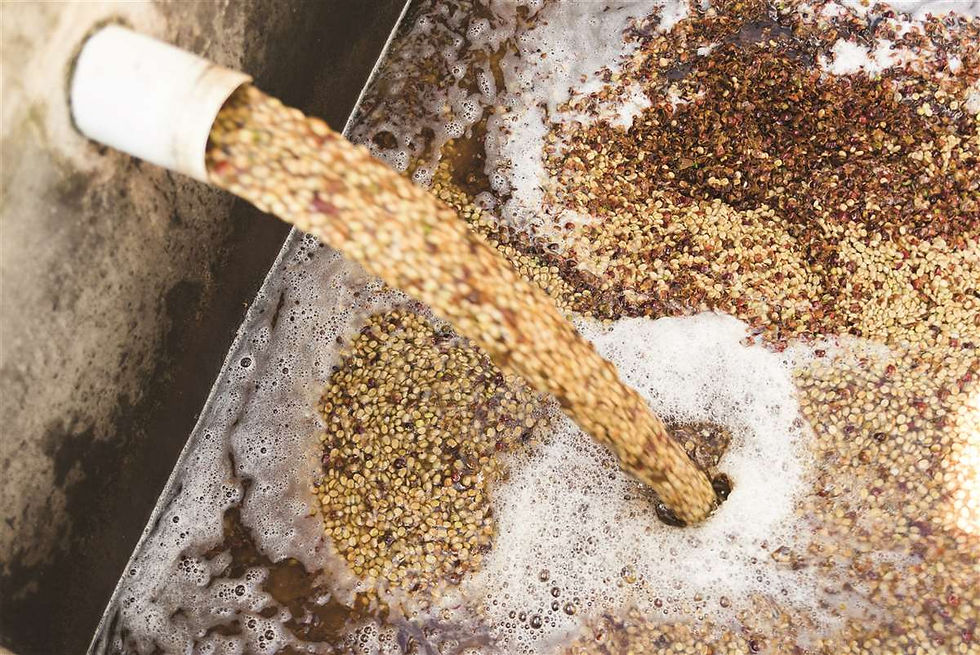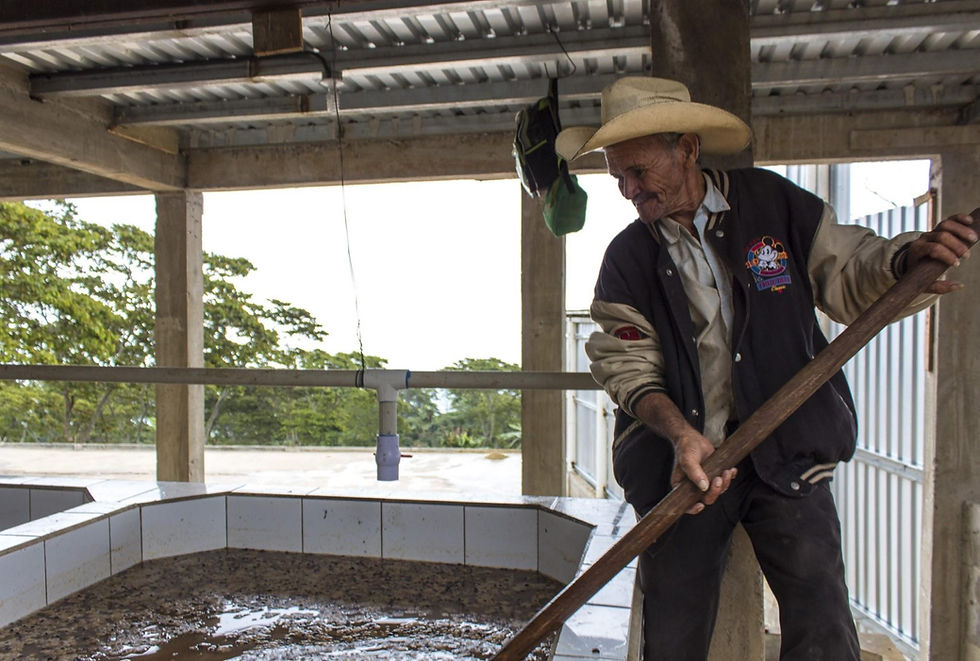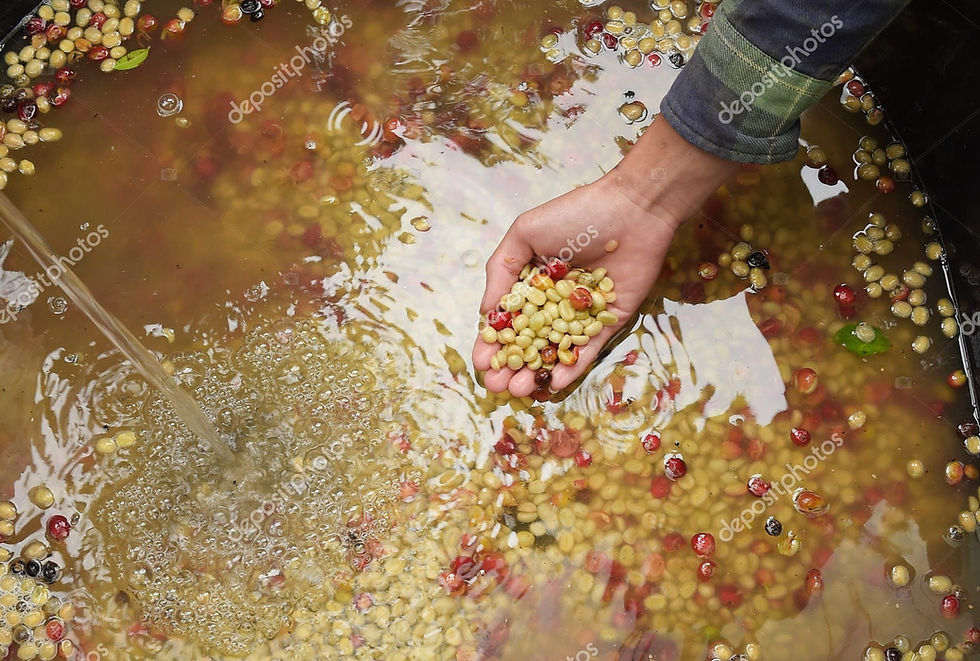
Once harvested, coffee processing must begin as quickly as possible and with great care to prevent the fruit from deteriorating. This processing phase directly impacts the flavor, it is time to peel or pulp the coffee beans, wash and dry before they are ready to be sent to roasters around the world.
Depending on the characteristics of the grain, at this stage it may or may not go through one of these methods:
Induced fermentation

The coffee grower, to add even more value to his coffee, may want to pass some of his best batches through an induced fermentation process.
This process can be done in closed barrels without the entry of oxygen, with yeast, without yeast, with water, in short there are several techniques, but all with the aim of extracting the most exotic and peculiar taste possible.
Peeling method (semi-washed or pulped)
This is a combined processing method of coffee beans where parts of the natural process and the washing process are used. This combined processing method is popular among single-origin and specialty coffees, as the processing provides conditions for a wider range of coffee flavors and aromas. The coffee beans are first soaked in water to remove the green and defective ones. After that, the pulp is removed mechanically, but the grains are not rinsed. They keep the mucilage, keeping some of the pulp. The grains are spread out to dry in the sun with pulp and sugar residues. This way the coffee beans do not spoil as easily as in the natural process, which requires more frequent attention. The remaining sugars from the beans are absorbed giving semi-washed or pulped natural processed coffees sweetness and richness. This process is sometimes referred to as Honeyed or Miel processed in Central American countries due to the honey aroma it imparts to the coffee.

Natural or Dry Method
It refers to the organic processing of coffee beans, which means that the harvested coffee beans are spread out to dry in the sun on a wide drying surface. Dried coffee beans are often turned and “turned” to prevent rot and mold. This process is also called “dry processing” as the coffee beans are not processed with water, but rather left to dry inside the fruit pulp. This processing is typical in places where water resources are scarce, such as Ethiopia and parts of Brazil, but at the same time the natural process can increase labor costs, since it is necessary to take care of drying the grains. coffee. When the coffee is completely dry, it is peeled to remove the dry pulp from the beans. The taste of natural processed coffees is often described as fruity, similar to berries, with notes of blueberries, strawberries or tropical fruits. The natural process gives the coffee beans a sweet aroma because there are many natural sugars in the coffee pulp that are absorbed by the coffee bean as it dries. If coffee beans are spoiled, they may start to smell fermented and yeasty due to the sugars present.
Wet method
In the wet method, pre-collected cherries go through a pulping machine to separate the skin and pulp from the grain.
After that, they go to the separator, where impurities such as leaves, soil and branches are removed.

The equipment also separates the so-called float coffee, which is the least dense and already presents problems, as well as green coffees that produce lower quality coffee.
Soon after, the fruits are taken to fermentation tanks filled with water where they will remain for 12 to 48 hours to remove the mucilage.
Fermentation intensifies the sensorial characteristics of the grains, and with this it gains exotic and unique flavors, being more fruity, floral and acidic.
When fermentation is complete, the grains are rinsed and are ready for drying, which can be dried in the sun or in drying machines.

Drying
Drying can take place on drying beds in the sun, indoors or through mechanical drying. The coffee is taken to the terrace which can be suspended or made of concrete, the coffee is spread in thin layers and turned every hour to even out the drying of the beans, until they reach the ideal humidity of 11% .
Some producers opt for a mechanized dryer, in which case it should not allow the machine temperature to reach 40°C. Drying can take place on drying beds in the sun, indoors or through mechanical drying. More than half of the world's coffees are processed this way because it produces a more cohesive, cleaner result, and even cleaner, more consistent tasting coffee.

The processing and drying of coffee beans has the biggest impact on the flavor of your cup of coffee, in addition to the degree of roast. When you want to roast your own coffee and have an idea of the types of aromas you want to achieve and like in your coffee, you need to pay attention to three things: the origin of the coffee bean, the processing method, and finally the choose the roasting method and degree of roasting suitable for the green coffee you prefer.
Tell me in the comments what process your coffee went through before arriving in your cup?












Kommentare